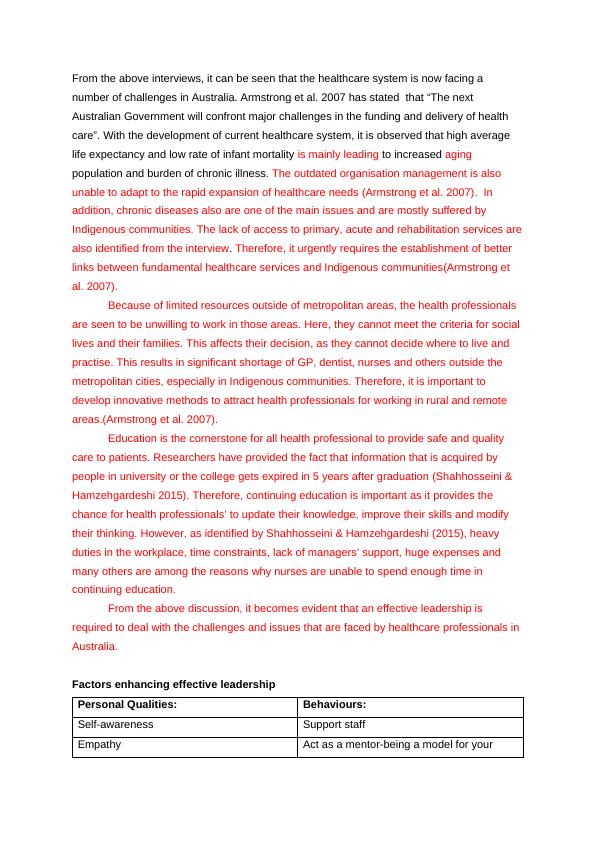The State Of Mental Healthcare: Challenges And Solutions

Table of Contents
Access to Mental Healthcare: A Persistent Barrier
Access to quality mental healthcare remains a significant hurdle for many. Geographic limitations, financial barriers, and persistent stigma all contribute to this ongoing crisis.
Geographic Limitations
The unequal distribution of mental health professionals creates significant disparities in access, particularly in rural and underserved communities.
- Lack of specialists: Many rural areas lack psychiatrists, psychologists, and therapists, forcing individuals to travel long distances for care.
- Long waiting lists: Even in areas with professionals, waiting lists can be extensive, delaying crucial treatment.
- Limited transportation options: Lack of reliable transportation can prevent individuals from accessing available services.
- Telehealth limitations: While telehealth offers promise, inconsistent internet access and digital literacy barriers limit its effectiveness in underserved areas.
Successful telehealth initiatives, such as those employing mobile units equipped with video conferencing technology in remote regions, and the expansion of rural community mental health centers, are showing promise in bridging these geographic gaps.
Financial Barriers & Insurance Coverage
The high cost of mental healthcare and inadequate insurance coverage create significant barriers to access.
- High cost of therapy sessions: The cost of individual therapy sessions can be prohibitive, even for those with insurance.
- Lack of affordable medication: Prescription medication for mental health conditions can be expensive, particularly for those without insurance or with high deductibles.
- Limited coverage for mental health services: Many insurance plans offer limited coverage for mental health services compared to physical health services, creating financial strain on individuals.
Solutions include expanding insurance coverage to include comprehensive mental healthcare benefits, increasing government funding for mental health services to subsidize costs, and implementing sliding-scale fee structures to make therapy more affordable.
Stigma and Societal Attitudes
The pervasive stigma surrounding mental illness prevents many from seeking help.
- Fear of judgment: Many fear being judged or discriminated against by family, friends, employers, or society in general.
- Discrimination: Individuals with mental health conditions often face discrimination in employment, housing, and social settings.
- Social isolation: Stigma can lead to social isolation and prevent individuals from seeking support.
- Lack of understanding: A lack of understanding and awareness among family and friends can hinder individuals from seeking help.
Strategies to reduce stigma include public awareness campaigns to educate the public about mental illness, educational initiatives in schools and workplaces, and promoting open and honest conversations about mental health. These efforts are critical to creating a supportive environment where individuals feel comfortable seeking help.
Quality of Mental Healthcare: Addressing Gaps in Service
Even when access is possible, the quality of mental healthcare varies significantly, highlighting further challenges.
Lack of Qualified Professionals
A shortage of qualified mental health professionals, including psychiatrists, psychologists, and therapists, contributes to long wait times, limited access to specialized care, and increased burnout among existing professionals.
- High burnout rates: The demanding nature of the work and limited resources lead to high burnout rates among mental health professionals.
- Insufficient training programs: There is a need for increased investment in mental health training programs to increase the number of qualified professionals.
- Unequal distribution of professionals across different specialties: Some specialties, such as child and adolescent psychiatry, face particularly acute shortages.
Solutions include increasing funding for mental health training programs and educational initiatives, improving working conditions and reducing burnout among professionals, and creating more attractive career paths to draw more individuals to the field.
Integration of Mental and Physical Healthcare
Better integration of mental and physical healthcare services is crucial for effective treatment, especially for individuals with co-occurring disorders.
- Improved communication between providers: Improved communication and collaboration between mental health and primary care providers are essential for coordinated care.
- Coordinated care plans: Developing coordinated care plans that address both mental and physical health needs can improve outcomes.
- Addressing co-occurring disorders: Many individuals experience both mental and physical health conditions; integrated care is essential to effectively manage both.
Integrating mental health services into primary care settings can improve access to early intervention and treatment, particularly for those who might not otherwise seek specialized care.
Treatment Gaps for Specific Populations
Specific populations, such as children, adolescents, seniors, and marginalized communities, face unique challenges in accessing and receiving appropriate mental healthcare.
- Tailored services for specific needs: Services must be tailored to meet the unique needs of different populations.
- Culturally competent care: Culturally competent care that respects diversity and addresses cultural differences is essential.
- Addressing systemic inequalities: Addressing systemic inequalities that disproportionately affect marginalized communities is crucial.
Successful initiatives focused on specific populations include culturally adapted therapies, community-based programs targeting youth, and outreach programs to engage seniors and underserved communities.
Innovative Solutions and Future Directions in Mental Healthcare
Technological advancements, a focus on prevention and early intervention, and policy changes are key to transforming the mental healthcare landscape.
Technological Advancements
Technology plays a crucial role in expanding access and improving the quality of mental healthcare.
- Increased accessibility: Telehealth platforms and mental health apps provide increased accessibility to care, particularly for individuals in remote areas or with mobility challenges.
- Reduced costs: Technology can reduce the cost of care by providing more efficient and scalable solutions.
- Personalized treatment options: Technology enables personalized treatment options tailored to individual needs and preferences.
Examples of successful mental health apps include those providing Cognitive Behavioral Therapy (CBT) exercises, mindfulness practices, and peer support. Telehealth platforms offer virtual therapy sessions and consultations with mental health professionals.
Investing in Prevention and Early Intervention
Investing in prevention and early intervention programs is crucial for reducing the burden of mental illness.
- School-based mental health programs: Early identification and intervention in schools are crucial for preventing mental health issues from escalating.
- Community-based initiatives: Community-based programs provide support and resources to individuals and families.
- Promoting mental wellness: Promoting mental wellness through education and awareness campaigns helps reduce stigma and improve overall mental health.
Investing in prevention and early intervention programs ultimately leads to long-term cost savings by reducing the need for more intensive and expensive treatments later in life.
Policy Changes and Advocacy
Policy changes and advocacy are essential for creating a system that supports equitable access to quality mental healthcare.
- Increased funding: Increased government funding is needed to support research, training, and service delivery.
- Improved insurance coverage: Expanding insurance coverage to include comprehensive mental health benefits is essential.
- Anti-stigma campaigns: Government-led anti-stigma campaigns can help raise awareness and reduce discrimination.
- Legislative action: Legislative action is needed to address systemic barriers to access and quality.
We urge readers to get involved in advocacy efforts to support improvements in mental healthcare policy and access.
Conclusion
Limited access, significant quality gaps, and a persistent stigma are major challenges facing mental healthcare today. Addressing these shortcomings requires a multifaceted approach that includes improved access through expanded telehealth and community-based services, increased investment in quality through training more professionals and better integration of mental and physical healthcare, and leveraging technological advancements to personalize and improve treatment options. Prevention and early intervention strategies are critical, along with sustained policy changes and ongoing advocacy efforts. Let's work together to improve access to quality mental healthcare for everyone.

Featured Posts
-
 8000 Km A Velo L Aventure De Trois Jeunes Du Bocage Ornais
May 02, 2025
8000 Km A Velo L Aventure De Trois Jeunes Du Bocage Ornais
May 02, 2025 -
 Tv Dallas Star Dies Another 80s Soap Legend Lost
May 02, 2025
Tv Dallas Star Dies Another 80s Soap Legend Lost
May 02, 2025 -
 Frimpong Transfer Speculation And Elliotts Liverpool Status
May 02, 2025
Frimpong Transfer Speculation And Elliotts Liverpool Status
May 02, 2025 -
 Rsalt Eajlt Ila Slah Twqf En Almghamrat Wdek Hsas
May 02, 2025
Rsalt Eajlt Ila Slah Twqf En Almghamrat Wdek Hsas
May 02, 2025 -
 Swiss President Calls For Peace Amidst Russian Invasion Of Ukraine
May 02, 2025
Swiss President Calls For Peace Amidst Russian Invasion Of Ukraine
May 02, 2025
Latest Posts
-
 Unian Novye Detali O Dogovore Mezhdu Frantsiey I Polshey Makron I Tusk
May 10, 2025
Unian Novye Detali O Dogovore Mezhdu Frantsiey I Polshey Makron I Tusk
May 10, 2025 -
 Franko Polskoe Partnerstvo Podpisanie Oboronnogo Soglasheniya I Ego Mezhdunarodnoe Znachenie
May 10, 2025
Franko Polskoe Partnerstvo Podpisanie Oboronnogo Soglasheniya I Ego Mezhdunarodnoe Znachenie
May 10, 2025 -
 Frantsiya I Polsha Podrobnosti Oboronnogo Soglasheniya Ot 9 Maya
May 10, 2025
Frantsiya I Polsha Podrobnosti Oboronnogo Soglasheniya Ot 9 Maya
May 10, 2025 -
 Dogovor Frantsii I Polshi Makron I Tusk Dostigli Soglasheniya Unian
May 10, 2025
Dogovor Frantsii I Polshi Makron I Tusk Dostigli Soglasheniya Unian
May 10, 2025 -
 Oboronniy Soyuz Frantsii I Polshi Posledstviya Dlya Transatlanticheskikh I Rossiysko Evropeyskikh Otnosheniy
May 10, 2025
Oboronniy Soyuz Frantsii I Polshi Posledstviya Dlya Transatlanticheskikh I Rossiysko Evropeyskikh Otnosheniy
May 10, 2025
